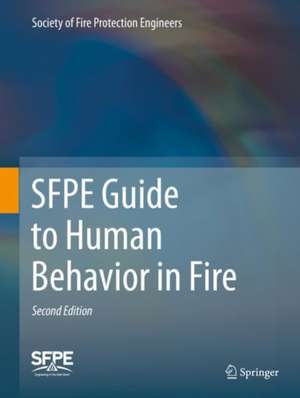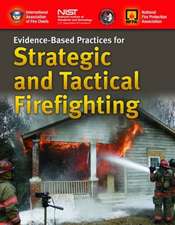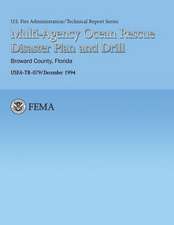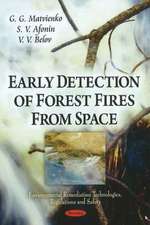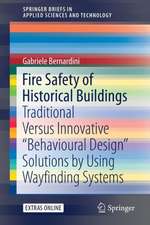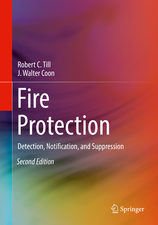SFPE Guide to Human Behavior in Fire
Autor Society of Fire Protection Engineersen Limba Engleză Hardback – 27 noi 2018
The Second Edition of SFPE's Engineering Guide: Human Behavior in Fire provides a common introduction to this field for the broad fire safety community: fire protection engineers/fire safety engineers, human behavior scientists/researchers, design professionals, and code authorities. The public benefits from consistent understanding of the factors that influence the responses and behaviors of people when threatened by fire and the application of reliable methodologies to evaluate and estimate human response in buildings and structures.
- Incapacitating Effects of Fire Effluent & Toxicity Analysis Methods
- Occupant Behavior Scnearios
- Movement Models and Behavioral Models
- Egress Model Selection, Verification, and Validation Estimation of Uncertainty and Use of Safety Factors
- Enhancing Human Response to Emergencies & Notification of Messaging
Preț: 596.06 lei
Preț vechi: 774.11 lei
-23% Nou
Puncte Express: 894
Preț estimativ în valută:
114.06€ • 121.97$ • 95.10£
114.06€ • 121.97$ • 95.10£
Carte tipărită la comandă
Livrare economică 14-19 aprilie
Preluare comenzi: 021 569.72.76
Specificații
ISBN-13: 9783319946962
ISBN-10: 331994696X
Pagini: 220
Ilustrații: XIV, 159 p. 24 illus.
Dimensiuni: 210 x 279 x 13 mm
Greutate: 0.75 kg
Ediția:2nd ed. 2019
Editura: Springer International Publishing
Colecția Springer
Locul publicării:Cham, Switzerland
ISBN-10: 331994696X
Pagini: 220
Ilustrații: XIV, 159 p. 24 illus.
Dimensiuni: 210 x 279 x 13 mm
Greutate: 0.75 kg
Ediția:2nd ed. 2019
Editura: Springer International Publishing
Colecția Springer
Locul publicării:Cham, Switzerland
Cuprins
1 Introduction.- 2 Integrating Human Behavior Factors into Design.- 3 Population Characteristics.- 4 Occupant Behavior Concepts - Cues, Decisions & Actions.- 5 Effects of Fire Effluent.- 6 Development and Selection of Occupant Behavioral Scenarios.- 7 Calculation of Effects of Fire Effluent.- 8 Physical Movement Concepts.- 9 Egress Model Selection.- 10 Egress Model Testing.- 11 Estimation of Uncertainty and Safety Factors.- 12 Enhancing Human Response to Emergency Notification and Messaging.- 13 Managing the Movement of Building Occupants.
Notă biografică
The SFPE Task Group on Human Behavior in Fire consists of the leading researchers on the topic, from academia, industry, and government.
The Society of Fire Protection Engineers (SFPE) is the professional society representing those practicing the field of fire protection engineering. The Society has over 4,600 members and 92 chapters, including 17 student chapters worldwide.
The purpose of SFPE is to advance the science and practice of fire protection engineering and its allied fields, to maintain a high ethical standard among its members and to foster fire protection engineering education.
Caracteristici
Singular resource for the fire safety community offers sound understanding of human behavior during emergencies Consensus-based resource developed from the work of the leading researchers throughout the world Identifies both quantitative and qualitative information that constitutes important considerations prior to developing safety factors, exercising engineering judgment, and using evacuation models in the practical design of buildings and evacuation procedures Thoroughly updated and expanded, this Second Edition includes new information on: Incapacitating Effects of Fire Effluent & Toxicity Analysis Methods Occupant Behavioral Scenarios Movement Models and Behavioral Models Egress Model Selection, Verification, and Validation Estimation of Uncertainty and Use of Safety Factors Enhancing Human Response to Emergency Notification and Messaging
